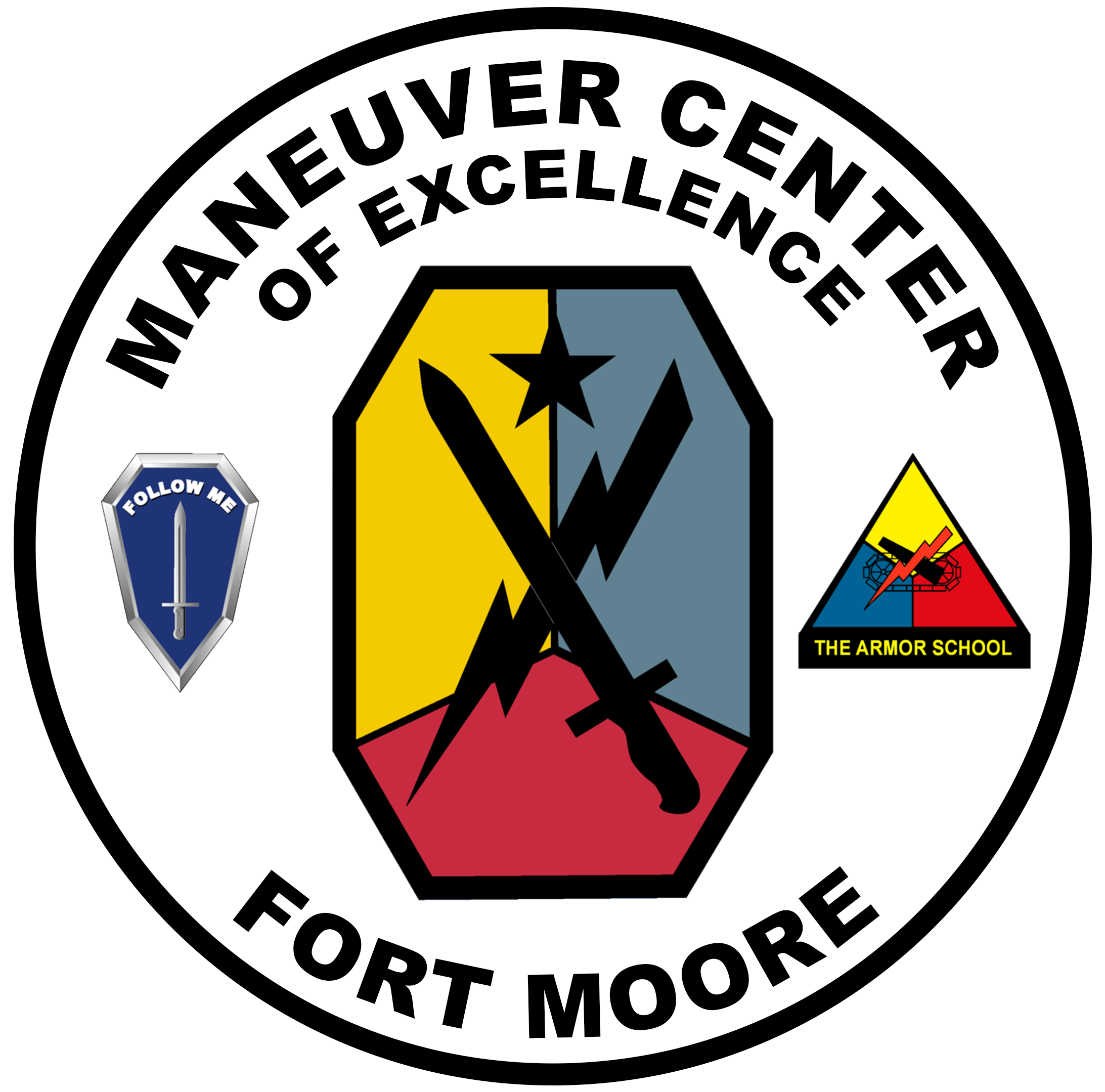Fort Moore
U.S. Army Fort Moore and The Maneuver Center of Excellence

199th Infantry Brigade Site
199th Infantry Brigade
Military Equal Opportunity Policies
The 11th Infantry was constituted on 3 May 1861 by President Abraham Lincoln. It was organized on 6 May 1862 at Newport Barracks, Kentucky, first as part of the Army of the Ohio and later, a part of the Army of the Cumberland, taking part in such battles as Shiloh, the Kentucky Campaign, Chickamaugua, Murfreesboro, the Battle of Atlanta, and the march through Georgia. Following the Civil War, the regiment became known as the Wandering 11th. Between 1898 and 1920, the 1st Battalion made 29 changes of station, including seven years of foreign service. The regiment participated in the Indian Campaigns until the war with Spain in 1898 and saw action in the Puerto Rican Campaign, from 1904 to 1913, the regiment was stationed in the west and saw duty in San Francisco following the 1906 earthquake which almost destroyed the city. The regiment also served as border guards in Texas, New Mexico, and Arizona, during threatened border trouble with Pancho Villa and his outlaw army.
On 24 April 1918, the regiment sailed for France. By May of 1918 it joined the 5th Division near Chaumont, France. The 11th then took part in the Vosges Mountains, St. Mihiel, and Meuse-Argonne offensives. In the second phase of the Meuse-Argonne offensive, the regiment forged a brilliant crossing of the Meuse River.
In 1922, the 11th moved to Fort Benjamin Harrison, Indiana, and remained there for 17 years.
In 1939, the 11th joined the 5th Division at Fort McClellan, Alabama and by 1942 was on its way to Iceland and remained there for 15 months until the regiment moved to England. The regiment landed in Normandy on 10 July 1944 and fought its way across France as part of General Patton's famed Third Army. The 11th Infantry played a prominent role in the reduction of the fortified city of Metz in the fall of 1944. During the Battle of the Bulge, the 11th counter-attacked into the southern portion of the Bulge, engaging the Germans in bitter winter fighting. On 22 March 1945, the 1st Battalion made a night river assault across the Rhine River at Oppenheim, giving General Patton a division bridgehead over the Rhine two days ahead of Field Marshall Montgomery's famous crossing. The 11th Infantry ended the war in Czechoslovakia.
Shortly after its return from the European Theater of Operations, the regiment was retired. It was reactivated in June 1954 in Germany, the 11th returned to Fort Ord, California and became an Infantry Training Unit.
On 14 June 1958, the 1st Battle Group, 11th Infantry, was reactivated as part of the 2d Infantry Division at Fort Benning, Georgia where it remained until February 1962 when it was redesignated as the 1st Battalion, 11th Infantry and assigned as an organic element of the 5th Infantry Division at Fort Carson, Colorado.
In July 1968, the 11th deployed for action in Vietnam and operated in Cam Lo, Dong Ha, Quang Tri, and Khe Sanh.
The 11th returned to Fort Carson on 6 August 1971 and served there as part of the 4th Infantry Division until 15 January 1984 when the battalion was inactivated.
On 14 August 1987, 1st , 2d, and 3d Battalions, The School Brigade, were redesignated as 1st, 2d, and 3d Battalions, 11th Infantry, and assigned to The School Brigade.
On 8 February 1991, the School Brigade was inactivated and redesignated as the 11th Infantry Regiment. The 1-11th is Regimental Headquarters, IOAC, the 283d Infantry Band, and other support agencies. 2-11th is the home of the Infantry Officer Basic Course. 3-11th is the Officer Candidate School.
1-507th is the home of the Airborne School.
On 27 June 2007, the 11th Infantry Regiment was redesignated the 199th Infantry Brigade.
199th Infantry Brigade (Light).
The 199th Infantry Brigade (Light) was a major combat unit of the United States Army serving in the Vietnam War. The brigade was formed at Fort Benning, Georgia in 1966. Nicknamed "the Redcatchers", the 199th LIB was hastily moved to Song Be, Vietnam in December, 1966 to provide an increased U.S. presence in the III Corps Tactical Zone and remained there until its return to Fort Benning in October, 1970, where it was inactivated. The unit was briefly reactivate at Fort Lewis Washington from the remains of the 9th Infantry Division (Motorized).
The brigade was conducting Operation Uniontown in Dong Nai Province when the 1968 Tet Offensive began. It immediately began a defense of U.S. II Field Force headquarters at Long Binh and the Bien Hoa Air Base against attacks by the 275th Viet Cong Regiment. One battalion was moved by helicopter to attack a Viet Cong command post at the Phu Tho racetrack inside Saigon, then engaged in house-to-house fighting in Cholon.
During 1969 the 199th was responsible for the security of the region north and east of the capital, and in 1970 moved into the "Iron Triangle" when other units participated in the Cambodian Incursion.